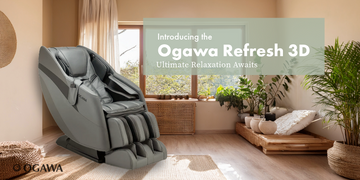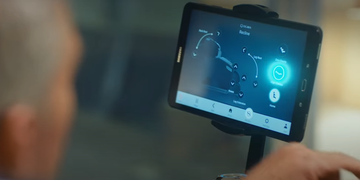As a doctor or medical professional, the waiting room of your office is a crucial location for any business built around health and wellness. The first impression a medical professional makes on their clientele is their waiting room. Your waiting room should be a warm, welcoming environment for any visiting clients.
Medical office administrators and doctors should determine the most effective way of interior decor to ensure it meets the business's needs. Here, we'll examine some elements crucial to a doctor’s waiting room and how to do efficient interior decor and design to match.
Creating a Warm and Inviting Atmosphere
Many people are nervous when going to a medical doctor's office, so it is crucial to ensure they are relaxed in the doctor's waiting room. To achieve this, consider designing the waiting room with different elements like,
- Thoughtfully designed lighting.
- Calm artwork.
- Plants.
- Unique seating layout and design.
- Massage chairs.
- Calming color palettes.
- Various activities for patients and family members.
1. Waiting Room Lighting and Decor Considerations
Thoughtfully designed lighting can create a soothing ambiance, with natural light being preferable where possible. A relaxing environment will go a long way towards reducing the physical signs of stress on a visiting patient.
Decor and aesthetics should reflect a clean, modern, and welcoming vibe, utilizing calming artwork and plants to add life to the space. The layout and arrangement of furniture play a pivotal role in optimizing comfort and accessibility, ensuring patients feel relaxed and at ease. The atmosphere gives a positive "vibe" to the space, but that vibe is supported by the seating options you choose for your waiting room decor.
2. Layout Of Doctors Office Waiting Room Chairs
Doctor's office waiting room chairs are a vital consideration that no medical office manager should overlook. Traditional seating options, such as rows of chairs, are practical but might not contribute to a warm and inviting atmosphere. It's worth considering innovative doctor's office waiting room chairs that blend comfort with functionality. These may include modular seating arrangements that allow for flexibility in terms of space usage.
Part of considering your seating options is saying, "This is a safe and comfortable space where you can relax." By offering comfortable doctor's office waiting room chairs, you demonstrate a commitment to patient well-being.
Additionally, alternative seating options, like cozy nooks with privacy screens or massage chairs, can further contribute to a calming environment. Patients no longer need to experience the traditional unease associated with waiting; instead, they can unwind and pass the time comfortably. Not only will it help those nervous patients relax, but it will also encourage them that it's not so bad the next time they require a visit.
3. Massage Chairs as Patient Seating
Medical offices thrive on return business, and providing comfortable, welcoming seating for your clientele is a great way to encourage their return. Incorporating massage chairs as your doctor’s office waiting room chairs can be a game-changer regarding patient comfort and satisfaction (among other benefits). These high-tech recliners offer a unique blend of relaxation and therapy. Massage chairs aren't just a luxury; they serve a functional purpose in healthcare atmospheres by alleviating patient anxiety and stress..
Massage chair benefits range, from stress reduction to easing pain from sports injuries. Beyond physical relief, massage chairs offer mental health benefits to the client that can be associated with medical appointments. The gentle kneading and rolling motions can help patients relax, reducing stress and nervousness. Moreover, offering massage chairs in your waiting room can set your medical practice apart from the competition, creating a memorable and positive impression for your patients. As a selling point, it's not a bad waiting room idea to explore.
4. Colors And Palette Choice
As a business, there's a good chance that you already have a set color palette, but do the colors in your office or your palette help with your patients’ emotions?
Color psychology and chromotherapy play a pivotal role in creating a soothing and relaxing environment. Choose a palette that conveys calmness and comfort when selecting colors for your furniture, decor, and paintings. Soft, muted tones like pale blues, sage greens, and warm neutrals have been found to reduce stress and anxiety. These colors evoke a sense of serenity and create a backdrop of tranquility that can put patients at ease.
In addition to wall colors, consider how your choice of furniture and decor complements the overall color scheme. Select furniture and accents harmonize with the chosen colors, creating a cohesive and inviting atmosphere. A well-thought-out color palette promotes relaxation and reflects your medical practice's commitment to patient well-being. You want to build a welcoming space, but not one that’s overbearing, and choosing the right colors will help with that.
4. Activity Considerations for Visitors and Their Families
The truth is that many people who visit won't just be coming alone. They'll have their family with them, which may require you to consider a few options for activities to keep them occupied.
Among the considerations you may have for catering to families and kids are:
- Magazines and reading material: Provide a selection of up-to-date magazines, newspapers, or educational brochures to keep patients engaged while they wait.
- Kids' play area: Designate a child-friendly space with toys, books, and games to entertain young patients and their families, reducing stress and restlessness.
- Refreshments: Offer a refreshment station with water, tea, and coffee. A warm beverage can be comforting, especially during colder seasons.
- Charging stations: Include charging stations or accessible power outlets for patients to charge their devices, ensuring they can stay connected while waiting.
More General Tips for Your Waiting Room Design
Client experience helps with retention and repeat visits. There are many medical office waiting room ideas that you can explore that can enhance your client's experience when coming in, including:
- Incorporating art and nature: Use artwork and indoor plants to enhance the visual appeal and create a calming atmosphere.
- Cleanliness and maintenance: Ensure the waiting room is clean, well-lit, and free from clutter, promoting a sense of order and hygiene.
- Noise control: To minimize disruptions, implement noise-reducing elements like acoustic panels or soothing background music.
- Accessibility: Make sure the medical office waiting room is easily accessible for all patients, including those with mobility challenges.
- Ask for feedback: The best way to understand if your waiting room design is effective is to ask your patients. Leaving a form out, or emailing a follow up survey for a period of time after changes have been implemented, can help you hear directly from them about its impact.
These tips can help make your medical office waiting room more inviting for patients and their families or well-wishers who come with them.
Constant Improvement and Iteration is Key
A medical office waiting space needs to evolve with your clients' needs. The necessities of yesteryear are vastly different today. Yet, there are many medical office waiting room ideas to make your office stand out as the one people would choose to go to when they need a medical professional.
Getting people in the door shouldn’t be a problem with the right addition, like artsy decor or a few massage chairs to relax your clients. Never be too afraid to experiment, but listen to your clients and ask them for feedback. Only by constantly revisiting your doctor’s waiting room's needs will you be able to effectively serve your client's wants.





